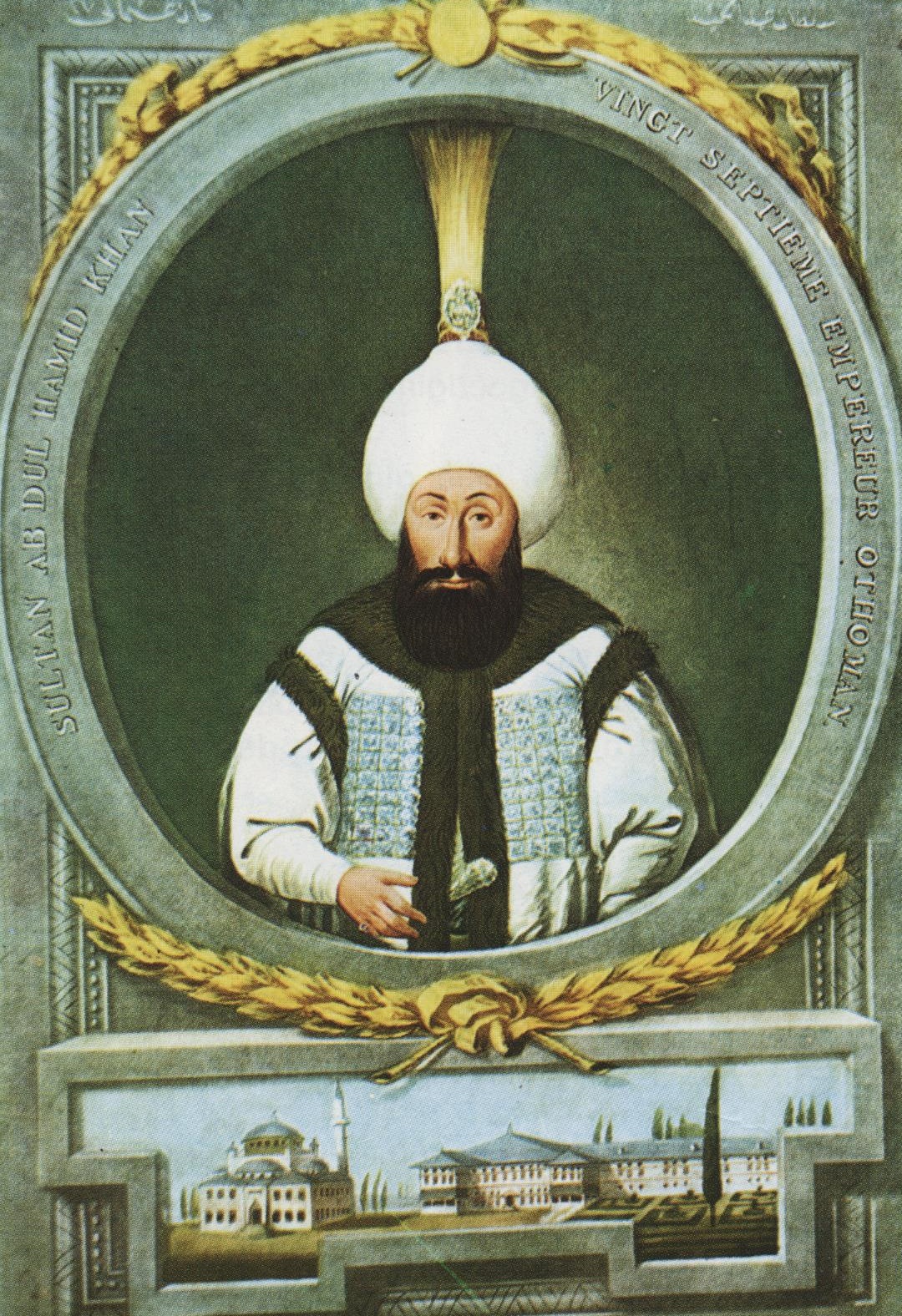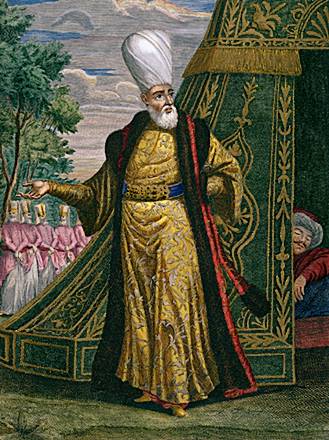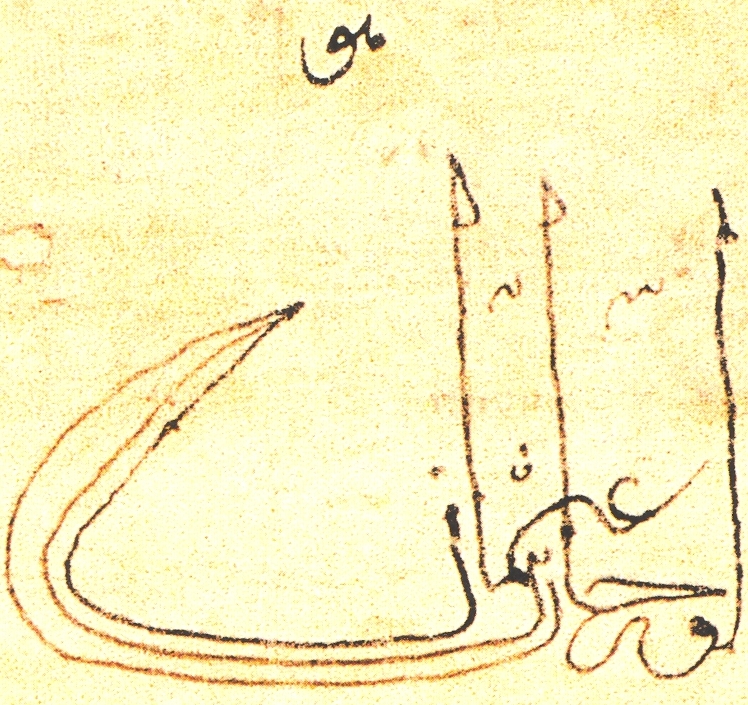|
Abdul Hamid I
Abdulhamid I or Abdul Hamid I (, ''`Abdü’l-Ḥamīd-i evvel''; ; 20 March 1725 – 7 April 1789) was the 27th sultan of the Ottoman Empire from 1774 to 1789. A devout and pacifist sultan, he inherited a bankrupt empire and sought military reforms, including overhauling the Janissaries and navy. Despite internal efforts and quelling revolts in Syria, Egypt, and Greece, his reign saw the critical loss of Crimea and defeat by Russia and Austria. The 1774 Treaty of Küçük Kaynarca granted Russia territorial and religious influence. He died soon after the fall of Ochakov in 1788. Early life Abdul Hamid was born on 20 March 1725, in Constantinople. He was a younger son of Sultan Ahmed III (reigned 1703–1730) and his consort Şermi Kadın. Ahmed III abdicated his power in favour of his nephew Mahmud I, who was then succeeded by his brother Osman III, and Osman by Ahmed's elder son Mustafa III. As a potential heir to the throne, Abdul Hamid was imprisoned in comfort b ... [...More Info...] [...Related Items...] OR: [Wikipedia] [Google] [Baidu] |
Custodian Of The Two Holy Mosques
His Majesty the Custodian of the Two Holy Mosques (abbreviated as CTHM; ), or Protector of the Two Holy Cities, is a Royal and noble styles, royal style that has been used officially by the King of Saudi Arabia, monarchs of Saudi Arabia since 1986. The title has historically been used by many Muslim rulers in the past, including the Ayyubid dynasty, Ayyubids, the Mamluk Sultanate, Mamluks, the List of sultans of the Ottoman Empire, Ottomans and the Sharifate of Mecca, Sharifain rulers of Hejaz. The title was sometimes regarded to denote the ''de facto'' Caliph of Islam, but it mainly refers to the ruler taking the responsibility of guarding and maintaining the two Holiest sites in Islam, holiest mosques in Islam: Masjid al-Haram, Al-Haram Mosque (, 'The Sacred Mosque') in Mecca and the Prophet's Mosque () in Medina, both of which are in the Hejazi region of Saudi Arabia. The Custodian has been named the most powerful and influential person in Islam and the Sunni branch of Islam by ... [...More Info...] [...Related Items...] OR: [Wikipedia] [Google] [Baidu] |
Crimea
Crimea ( ) is a peninsula in Eastern Europe, on the northern coast of the Black Sea, almost entirely surrounded by the Black Sea and the smaller Sea of Azov. The Isthmus of Perekop connects the peninsula to Kherson Oblast in mainland Ukraine. To the east, the Crimean Bridge, constructed in 2018, spans the Strait of Kerch, linking the peninsula with Krasnodar Krai in Russia. The Arabat Spit, located to the northeast, is a narrow strip of land that separates the Syvash lagoons from the Sea of Azov. Across the Black Sea to the west lies Romania and to the south is Turkey. The population is 2.4 million, and the largest city is Sevastopol. The region, internationally recognized as part of Ukraine, has been under Russian occupation of Crimea, Russian occupation since 2014. Called the Tauric Peninsula until the early modern period, Crimea has historically been at the boundary between the Classical antiquity, classical world and the Pontic–Caspian steppe, steppe. Greeks in pre-Rom ... [...More Info...] [...Related Items...] OR: [Wikipedia] [Google] [Baidu] |
Janissaries
A janissary (, , ) was a member of the elite infantry units that formed the Ottoman sultan's household troops. They were the first modern standing army, and perhaps the first infantry force in the world to be equipped with firearms, adopted during the reign of Murad II (r. 1421–1444, 1446–1451). The corps was established under either Orhan or Murad I, and dismantled by Mahmud II in 1826. Janissaries began as elite corps made up through the '' devşirme'' system of child levy enslavement, by which indigenous European Christian boys, chiefly from the Balkans, were taken, levied, subjected to forced circumcision and forced conversion to Islam, and incorporated into the Ottoman army. They became famed for internal cohesion cemented by strict discipline and order. Unlike typical slaves, they were paid regular salaries. Forbidden to marry before the age of 40 or engage in trade, their complete loyalty to the Ottoman sultan was expected. By the 17th century, due to a drama ... [...More Info...] [...Related Items...] OR: [Wikipedia] [Google] [Baidu] |
Sultan Of The Ottoman Empire
The sultans of the Ottoman Empire (), who were all members of the Ottoman dynasty (House of Osman), ruled over the Boundaries between the continents, transcontinental empire from its perceived inception in 1299 to Dissolution of the Ottoman Empire, its dissolution in 1922. At its height, the Ottoman Empire spanned an area from Budin Eyalet, Hungary in the north to Yemen Eyalet, Yemen in the south and from Ottoman Algeria, Algeria in the west to Ottoman Iraq, Iraq in the east. Administered at first from the city of Söğüt since before 1280 and then from the city of Bursa since 1323 or 1324, the empire's capital was moved to Adrianople (now known as Edirne in English) in 1363 following Ottoman conquest of Adrianople, its conquest by Murad I and then to Constantinople (present-day Istanbul) in 1453 following Fall of Constantinople, its conquest by Mehmed the Conqueror, Mehmed II. The Rise of the Ottoman Empire, Ottoman Empire's early years have been the subject of varying narrat ... [...More Info...] [...Related Items...] OR: [Wikipedia] [Google] [Baidu] |
Abdulhamid I
Abdulhamid I or Abdul Hamid I (, ''`Abdü’l-Ḥamīd-i evvel''; ; 20 March 1725 – 7 April 1789) was the 27th sultan of the Ottoman Empire from 1774 to 1789. A devout and pacifist sultan, he inherited a bankrupt empire and sought military reforms, including overhauling the Janissaries and navy. Despite internal efforts and quelling revolts in Syria, Egypt, and Greece, his reign saw the critical loss of Crimea and defeat by Russia and Austria. The 1774 Treaty of Küçük Kaynarca granted Russia territorial and religious influence. He died soon after the fall of Ochakov in 1788. Early life Abdul Hamid was born on 20 March 1725, in Constantinople. He was a younger son of Sultan Ahmed III (reigned 1703–1730) and his consort Şermi Kadın. Ahmed III abdicated his power in favour of his nephew Mahmud I, who was then succeeded by his brother Osman III, and Osman by Ahmed's elder son Mustafa III. As a potential heir to the throne, Abdul Hamid was imprisoned in comfort b ... [...More Info...] [...Related Items...] OR: [Wikipedia] [Google] [Baidu] |
Sunni Islam
Sunni Islam is the largest Islamic schools and branches, branch of Islam and the largest religious denomination in the world. It holds that Muhammad did not appoint any Succession to Muhammad, successor and that his closest companion Abu Bakr () rightfully succeeded him as the caliph of the Muslim community, being appointed at the meeting of Saqifa. This contrasts with the Succession of ʿAlī (Shia Islam), Shia view, which holds that Muhammad appointed Ali, Ali ibn Abi Talib () as his successor. Nevertheless, Sunnis revere Ali, along with Abu Bakr, Umar () and Uthman () as 'Rashidun, rightly-guided caliphs'. The term means those who observe the , the practices of Muhammad. The Quran, together with hadith (especially the Six Books) and (scholarly consensus), form the basis of all Fiqh, traditional jurisprudence within Sunni Islam. Sharia legal rulings are derived from these basic sources, in conjunction with Istislah, consideration of Maslaha, public welfare and Istihsan, jur ... [...More Info...] [...Related Items...] OR: [Wikipedia] [Google] [Baidu] |
Tughra
A tughra (; ) is a calligraphy, calligraphic monogram, Seal (emblem), seal or signature of a sultan that was affixed to all official documents and correspondence. Inspired by the Tamga, tamgha, it was also carved on his seal and stamped on the coins minted during his reign. Very elaborate decorated versions were created for important documents that were also works of art in the tradition of Ottoman illumination, such as the example of Suleiman the Magnificent in the gallery below. The tughra was designed at the beginning of the sultan's reign and drawn by the court calligrapher or ''nisanci, nişancı'' on written documents. The first tughra examples are from the 14th century. Tughras served a purpose similar to the cartouche in ancient Egypt or the Royal Cypher of British monarchs. Every Ottoman sultan had his own individual tughra. Etymology There are two main schools of thought on the origins of the word tughra. The first sees it derived from a Turkic languages, Turkic secret ... [...More Info...] [...Related Items...] OR: [Wikipedia] [Google] [Baidu] |
Rabia Şermi Kadın
Rabia Şermi Kadın (; "''spring''" and "''tranquil''"; died; 1732;) was a consort of Sultan Ahmed III and the mother of Sultan Abdul Hamid I. Life Her birthplace and date are unknown. She fell victim to the Ottoman slave trade and was placed in the Ottoman Imperial harem as the concubine of Ahmed III. On 20 March 1725 she gave birth to her only son Şehzade Abdulhamid. In 1728, when he was three she commissioned a fountain in Şemsipaşa, Üsküdar. Ahmed was deposed in 1730, and his nephew Mahmud I ascended the throne. Şermi along with other ladies of Ahmed's harem went to the Old Palace, at Beyazıt Square. Death and aftermath Şermi died in 1732 leaving Abdulhamid motherless at the age of seven. He was then entrusted in the care of his elder half-brother Mustafa III. She was buried in the mausoleum of imperial ladies, in the New Mosque in Istanbul. Abdulhamid ascended the throne in 1774 after the death of his elder half brother Mustafa III. However, she was never Vali ... [...More Info...] [...Related Items...] OR: [Wikipedia] [Google] [Baidu] |
Ahmed III
Ahmed III (, ''Aḥmed-i sālis''; was sultan of the Ottoman Empire and a son of sultan Mehmed IV (r. 1648–1687). His mother was Gülnuş Sultan, originally named Evmania Voria, who was an ethnic Greek. He was born at Hacıoğlu Pazarcık, in Dobruja. He succeeded to the throne in 1703 on the abdication of his brother Mustafa II (1695–1703). Nevşehirli Damat İbrahim Pasha and the Sultan's daughter, Fatma Sultan (wife of the former) directed the government from 1718 to 1730, a period referred to as the '' Tulip Era''. During the initial days of Ahmed III's reign, significant efforts were made to appease the janissaries. However, Ahmed's effectiveness in dealing with the janissaries who had elevated him to the sultanate was limited. Grand Vizier Çorlulu Ali Pasha, whom Ahmed appointed, provided valuable assistance in administrative affairs and implemented new measures for the treasury. He supported Ahmed in his struggles against rival factions and provided stability to ... [...More Info...] [...Related Items...] OR: [Wikipedia] [Google] [Baidu] |
Ottoman Dynasty
The Ottoman dynasty () consisted of the members of the imperial House of Osman (), also known as the Ottomans (). According to Ottoman tradition, the family originated from the Kayı tribe branch of the Oghuz Turks, under the leadership of Osman I in northwestern Anatolia in the district of Bilecik, Söğüt. The Ottoman dynasty, named after Osman I, ruled the Ottoman Empire from 1299 to 1922. During much of the Empire's history, the sultan was the absolute regent, head of state, and head of government, though much of the power often shifted to other officials such as the Grand Vizier of the Ottoman Empire, Grand Vizier. During the First Constitutional Era, First (1876–78) and Second Constitutional Eras (1908–20) of the late Empire, a shift to a constitutional monarchy was enacted, with the Grand Vizier taking on a prime ministerial role as head of government and heading an elected General Assembly of the Ottoman Empire, General Assembly. The imperial family was deposed ... [...More Info...] [...Related Items...] OR: [Wikipedia] [Google] [Baidu] |
Hibetullah Sultan
Hibetullah Sultan (; "''gift of Allah''"; 16 March 1789 – 19 September 1841) was an Ottoman princess, the daughter of Sultan Abdul Hamid I, and his consort Şebsefa Kadın. She was the half sister of Sultans Mustafa IV and Mahmud II. Early life Hibetullah Sultan was born on 16 March 1789 in the Topkapı Palace. Her father was Sultan Abdul Hamid I, and her mother was Şebsefa Kadın. She was the youngest child of her parents and the youngest child of her father, who died a month after her birth. She had a brother Şehzade Mehmed Nusret, six years elder then her, two sisters, Alemşah Sultan, four years elder then her, and Emine Sultan, one year elder then her. After her father's death in 1789, she and her mother settled in the Old Palace. Marriage In 1801, when Hibetullah was twelve years old, her cousin Sultan Selim III betrothed her to their cousin Sultanzade Alaeddin Pasha, the son of Seyyid Ahmed Pasha and Hatice Sultan, daughter of Mustafa III. The marriage took place on ... [...More Info...] [...Related Items...] OR: [Wikipedia] [Google] [Baidu] |








